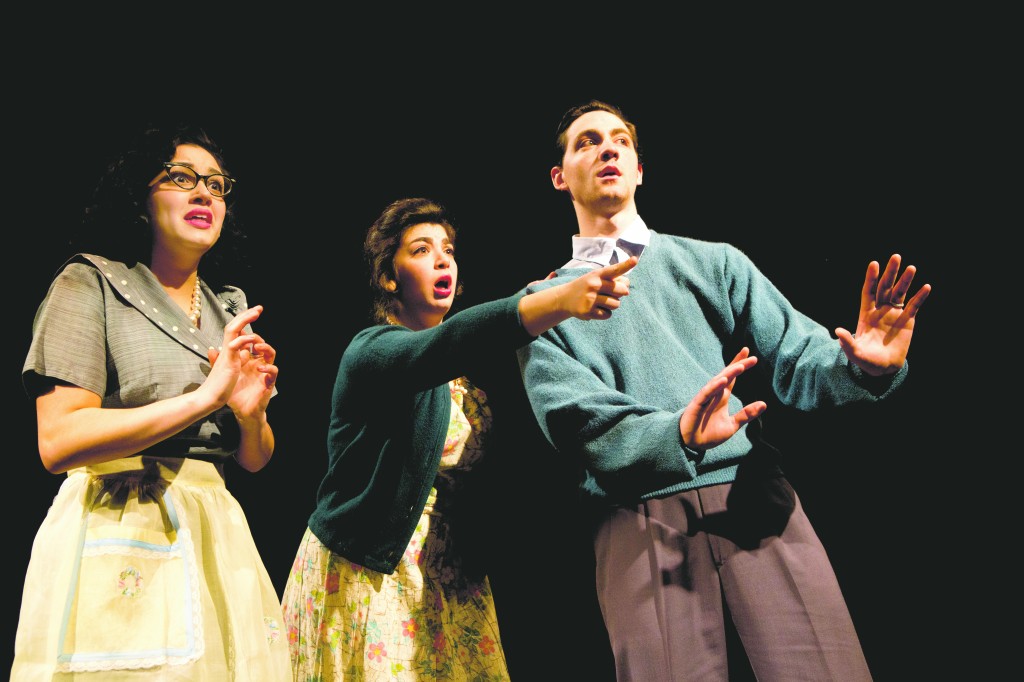
Watters Theater in the Fine Arts Building was transported to another dimension last weekend, as Binghamton University’s theatre department staged “The Twilight Zone.” In this stage adaptation of Rod Serling’s television show, audiences were treated to a night of sci-fi, mystery and suspense.
Premiering in 1959, “The Twilight Zone” became a hit among its fan base, eventually winning Serling two Emmys and a Golden Globe Award. In its 156 episodes, it featured such talented actors as Morgan Freeman and skilled writers like Ray Bradbury. The show ran until 1964 and was eventually adapted into a movie, comic books, a series of graphic novels and now, a two-act play.
Staying true to the original format of the TV show, the play was presented as two separate, unrelated stories, featuring the same actors playing different characters. The first act, “The Monsters are Due on Maple Street,” tells the story of an average American neighborhood turned upside down. After a bright light flashes through the sky, the people of Maple Street lose all their power and, soon after, their humanity. In what was presented as entertaining, organized chaos, the people of the neighborhood begin to point fingers and turn against each other as the act unfolds.
The second act, “Dust,” tells the story of a mother trying to save her son, who is on death row for accidentally killing a young girl while drunk on a carriage ride. The mother attempts to save her son through supernatural means when she buys “magic dust” from a charlatan salesman. Regardless of the heavy nature of the material, the salesman carried along the scene with an air of comic relief.
While the characters differed between the acts, the two narrators remained the same, giving an engaging and often frightening dialogue. Through their appearances and words, they highlighted the themes and lessons portrayed in each act, summing it all up for the audience as well as offering a brief history of the television show.
Each actor brought enthusiasm and reality to his or her part, making characters believable and engaging. Well-imagined costumes and scenery helped to bring the scenes to life, whether it was the average American neighborhood of the ’50s in “Monsters” or the jail and sheriff’s office in the Western setting of “Dust.”
“The Twilight Zone” was truly a multimedia production, with incredible lighting that was a show in itself. In addition, one scene in “Monsters” was entirely done on video, allowing a modern aspect to be a part of an old script.
“My entire performance was thrown over the projector,” said Kevin Gleeson, an actor in the play and a senior majoring in economics. “It was pretty interesting. We had to work with a bunch of different shots. It was pretty technical, but exciting to work with.”
While the show stayed true to the vision of Rod Serling, it featured some artistic additions. “Monsters” contained a scene that could only be described as a surreal type of modern dance, with characters moving and swaying in synchronization.
Additional performances will be shown on March 14 and 15 at 8 p.m. and March 16 at 2 p.m. Following the performance on March 16, there will be a talk with director Elizabeth Mozer and Anne Serling, author of “As I Knew Him: My Dad, Rod Serling.”


